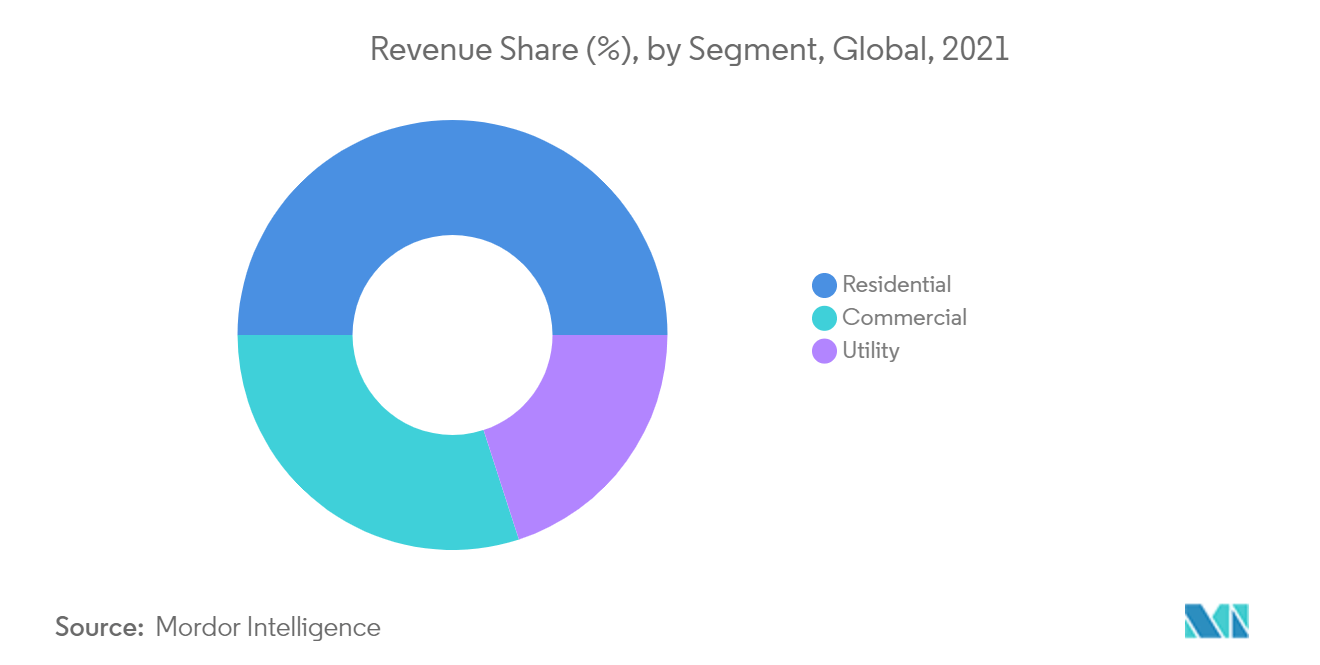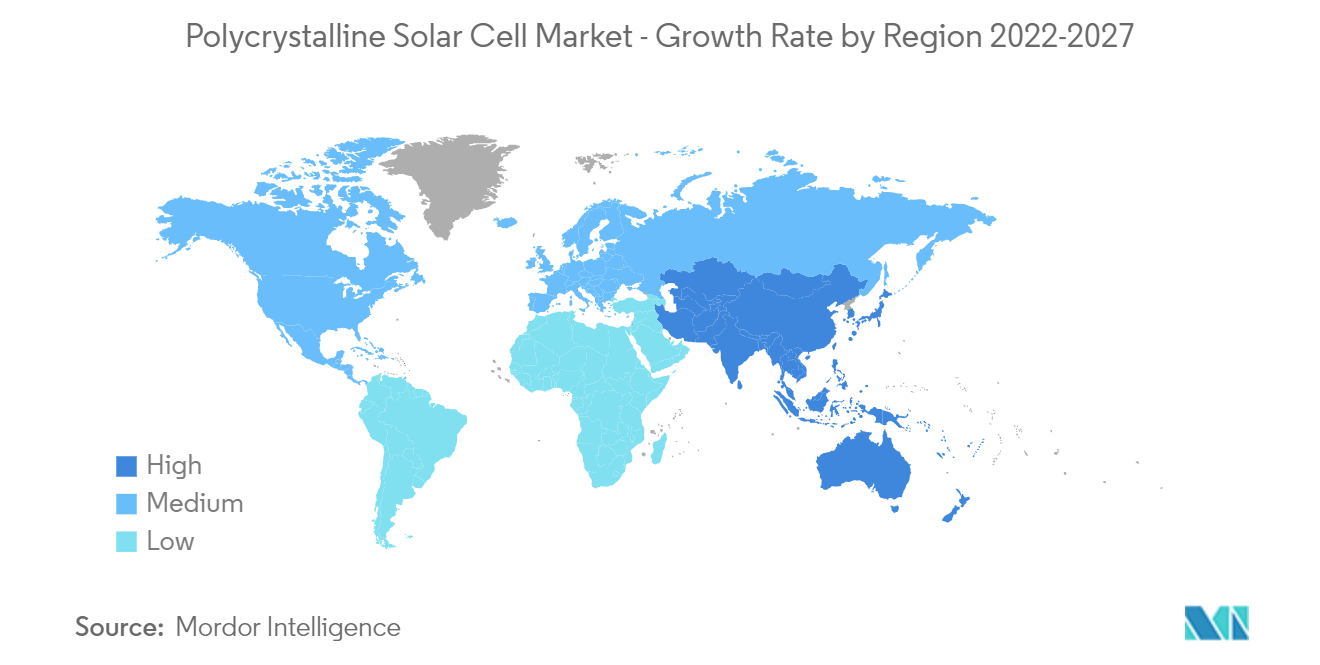Market Trends of Polycrystalline Solar Cell Industry
This section covers the major market trends shaping the Polycrystalline Solar Cell Market according to our research experts:
Residential Segment to Witness Significant Growth
- Polycrystalline Solar cells consist of several crystals of silicon in single PV cells. Several fragments of silicon are melted together to form the wafers of polycrystalline solar cells.
- Since such cells do not require individual placement and individual placement of each crystal and allow usage of most of the silicon during the production. Their costs come down as compared to monocrystalline solar cells and as a result, they are more affordable.
- The majority of the governments globally have enacted the net metering legislation along with significant subsidies on solar system installation in residential setups. These cells are readily used in the residential segment due to their cheaper costs and marginally lower efficiency as compared to mono-crystalline solar cells.
- Furthermore, as the price of polycrystalline cells is coming down more and more people are able to afford it who do not have access to electricity and as result providing a major boost to the market.
- Thus, owing to the above-mentioned points the residential segment is likely to witness significant growth during the forecast period

Asia Pacific expected to be the fastest growing region.
- Asia-Pacific is the largest region globally in terms number of people living. Traditionally the energy demand has been fulfilled through the fossil fuels in the region, primarily petroleum and coal, however recently increasing adoption of solar energy due to its declining cost has been seen.
- The region is also home to China, which has a significant manufacturing capacity for polycrystalline solar cells which fulfills the demand of the region. In 2022, the world's top three polysilicon firms were from China and are further aiming to reach a production capacity of 370,000 MT after a massive expansion by 2023.
- In India, In September 2021, Reliance Industries Ltd, Shirdi Sai, and Jindal Poly placed their bids for manufacturing polysilicon (stage-1), wafer (stage-2), and cells (stage-3 and stage 4) for setting up solar manufacturing units under the government's production linked incentive scheme.
- Thus, considering the above-mentioned points, the Asia-Pacific region is likely to be the fastest-growing region globally.


